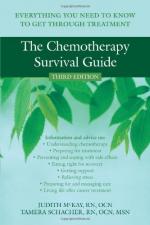|
This section contains 2,892 words (approx. 10 pages at 300 words per page) |

|
between them and everyone else. While most people rarely had contact with chimney soot, the sweeps lived and breathed this residue, which contained a cancer-causing agent called coal tar. Eventually, Plott was able to link the frequency of cancer in chimney sweeps to their exposure to coal tar in the chimneys. This study was one of the first to distinguish a scientific link between a chemical and its ability to cause cancer. The use of chemicals to cure cancer, however, was still over a century away.
A Deadly Weapon
As it turned out, the first chemical to show promise in treating cancer was, paradoxically, known to cause cancer. During World War I, the Germans developed mustard gas as a chemical warfare agent. Mustard gas was a very powerful weapon because it caused skin blisters, damage to the respiratory tract and eyes, and substantial internal...
|
This section contains 2,892 words (approx. 10 pages at 300 words per page) |

|




